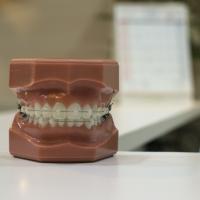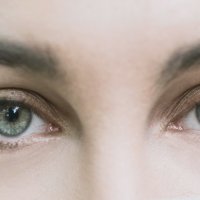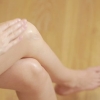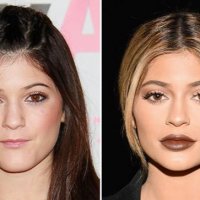Home > Blog > Skin and Body
How Lens Color Impacts Vision: Choosing the Right Tint for Outdoor Work
When it comes to sunglasses, most people focus on how dark the lenses are or whether the frames look good. But if you're someone who works outside—on a construction site, a farm, a delivery route, or in any other hands-on environment—there’s another detail that matters a lot more than people think: lens color.
The color or tint of a sunglass lens doesn’t just affect how your sunglasses look—it changes how you see the world. It affects your depth perception, contrast, and how well you can pick out shapes, shadows, and changes in terrain. In short, the right lens tint can improve your ability to work efficiently and safely in a variety of conditions.
So, what do different lens colors do, and how do you pick the right one for your job? This article breaks it down in simple terms so you can choose sunglasses that help you see better, protect your eyes, and support your work, whatever the weather or setting.
Not all sunlight is the same. The brightness, angle, and type of light you're exposed to can change throughout the day and depending on where you work. In the early morning or late afternoon, sunlight has a warmer tone and comes in at a lower angle, which can create long shadows and sharp contrasts. Around midday, the sun is directly overhead, producing harsher light that bounces off surfaces like concrete, water, metal, or glass. Cloudy days add another layer of complexity by diffusing the light and lowering contrast.
Different lens tints are designed to help your eyes adapt to these changing light conditions. They filter certain parts of the light spectrum more than others. This doesn’t just reduce brightness—it actually changes the way you see colors, edges, and movement. The effect can be the difference between easily spotting a dropped tool in the gravel or missing a step on a job site.
Gray lenses are one of the most popular choices for outdoor use. They reduce overall brightness without distorting colors. This makes them ideal for jobs where color accuracy matters—like electricians reading wire colors or landscapers matching plants and materials. Gray lenses also help reduce eye fatigue in strong sunlight, making them a safe, all-purpose choice for long workdays outside.
Brown and amber lenses are especially good at enhancing contrast and depth perception. These lenses block some of the blue light in the atmosphere, which helps make shadows more defined and objects more crisp. This is particularly helpful in variable lighting conditions, like when clouds are moving quickly overhead or when you’re working in shaded areas with spots of sun. For people doing carpentry, roadwork, or equipment operation, the increased contrast can make tasks feel easier and reduce strain on the eyes.
Yellow lenses are often used in low-light settings, like early mornings, foggy weather, or shaded work zones. They increase contrast and brighten everything slightly, which can help with visibility when it’s not quite dark but not very bright either. However, they don’t reduce much actual brightness, so they’re not the best for full sun. Still, for people who start their workday before the sun is fully up, yellow lenses can provide a helpful boost.
Green lenses fall somewhere between gray and brown. They preserve color balance like gray lenses do but offer slightly better contrast. Many people find them relaxing on the eyes, which can make them a good choice for long days outside where both color accuracy and comfort are needed. They’re not as common, but some workers prefer them for driving or security-related jobs where lighting conditions shift frequently.
Mirrored lenses aren’t a color themselves but a coating that can be added on top of any tint. They reflect more sunlight away from the lens, reducing glare even more. This can be helpful on especially bright days or when working near reflective surfaces like water, white walls, or vehicles. Just remember that mirrored lenses often make the sunglasses darker, so they may not be the best choice for early morning or low-light use.
When choosing lens tint for work, you also need to think about the type of tasks you do. If your work involves moving between indoors and outdoors, very dark lenses may make it harder to adjust your vision quickly. In that case, lighter gray or brown tints—or even photochromic lenses that adjust automatically to light levels—might be a better option.
The surfaces around you also play a role. Working near sand, gravel, snow, or white buildings increases glare, which means polarized lenses with gray or brown tints are more useful. On the other hand, if you work in shady spaces with tree cover or overhangs, amber or yellow tints can help you spot small changes in texture or movement.
Of course, it’s not just about the color of the lens. The quality of the sunglasses matters just as much. Look for lenses that are rated UV400, meaning they block 100% of UVA and UVB rays. Even if a tint makes your surroundings appear darker, that doesn’t mean it’s blocking harmful ultraviolet light unless it’s been treated for it.
Polarization is another feature worth considering, especially for jobs where glare is a problem. Polarized lenses cut down on reflected light from flat surfaces like roads, water, or metal equipment. They work with any tint and can make a big difference in visibility and comfort, especially during long shifts.
One example of a brand offering a good balance between lens quality and tint variety is Faded Days Sunglasses, which offers options that combine UV protection, polarization, and several tint types designed for high-glare outdoor use.
Comfort matters too. No matter how good the lens tint is, if your sunglasses don’t fit well, you won’t wear them. Make sure they sit snugly without pinching. Rubber nose pads and temple grips can help them stay in place when you move around or sweat. A lightweight frame makes a big difference if you wear sunglasses all day.
Keep in mind that not every tint works for every condition, and sometimes it’s smart to own more than one pair. Many outdoor professionals keep two or three pairs of sunglasses on hand—one for bright days, one for low light, and one all-purpose option.
In the end, the color of your lenses is more than just a matter of taste. It’s a tool that can either help or hinder your performance outdoors. Choosing the right tint can improve your safety, reduce eye fatigue, and even make your work a little easier.
Before your next day on the job, take a moment to look through your sunglasses. Are they helping you see better? Are they made for the environment you're working in? If not, it may be time to try a tint that works as hard as you do.






